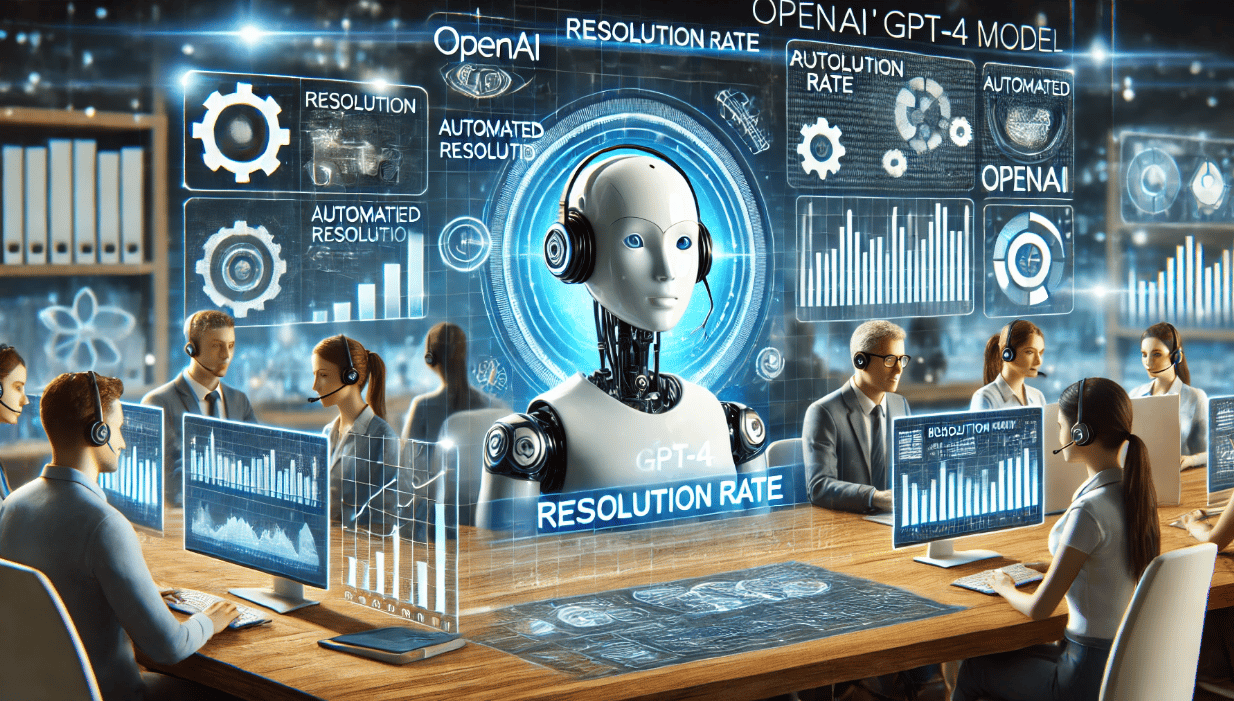
Image Source: ChatGPT-4o
Ada Uses GPT-4 to Double Customer Service Resolution Rates with AI
Ada, an AI-native customer service automation platform, is driving a $100B transformation in customer service spending. Since its founding in 2016, Ada has grown to a valuation of $1.2B, securing $200M in funding. The platform is used by notable brands such as Verizon, YETI, Canva, and Square. While Ada has always embraced AI, their recent integration of GPT-4 marks a significant leap in their capabilities.
From NLP to GPT-4: A New Era of AI for Ada
Ada initially built its platform using custom Natural Language Processing (NLP) models, but there was a gap in resolving customer queries effectively. According to Mike Gozzo, Ada’s Chief Product and Technology Officer, the team became excited by the possibilities of OpenAI’s large language models (LLMs). In 2022, they made the decision to rebuild their product with a focus on reasoning capabilities offered by these advanced models.
Introducing a New Customer Service Metric: Resolution Rate
Traditionally, customer service automation has been measured by the containment rate—how many queries are handled by chatbots without human intervention. However, Ada found that achieving high containment rates didn’t necessarily mean good customer experiences. The team shifted their focus to resolution rate, which measures how well conversations are resolved without human assistance. By integrating GPT-4 with their historical data, Ada developed an evaluation framework that rates conversations based on customer satisfaction, accuracy, and safety of replies.
Ada’s system now boasts an 80–90% agreement rate with human evaluations, setting a new standard for customer service automation.
Leveraging OpenAI’s API for Enhanced Performance
Ada has been working closely with OpenAI, using their API not only for evaluation but also for powering the new generation of Ada’s AI Agent. The platform benefits from several features of OpenAI’s models:
Quality of Inference: Ada stress-tests models on scalability and quality, using a synthetic test framework. So far, no other models have surpassed OpenAI’s performance.
Latency: Low-latency models are crucial for Ada’s voice use cases. GPT-4o has significantly improved response times and overall performance.
Fine-Tuning: Ada uses OpenAI’s fine-tuning API to reduce hallucinations in chatbot responses, aiming to further improve reasoning abilities over time.
Achieving Higher Resolution Rates and Customer Satisfaction
Ada’s AI Agent, powered by OpenAI’s multi-agent configuration, processes customer queries through several iterations of reasoning & understanding, using tools, and knowledge gathering. This approach has significantly increased the resolution rate of customer queries. Previously, Ada previously achieved a 30% resolution rate; with their new system, resolution rates have climbed to 60%, with top-performing clients reaching over 80%.
This improvement has had a major impact on Ada’s customers, delivering benefits like full-time equivalent (FTE) savings, higher customer satisfaction, retention, and increased signups. “From one technology to the next, we’ve doubled the amount of conversations we can automatically resolve with a great experience,” Gozzo said.
Looking Ahead: Aiming for 100% Resolution Rate
Ada is confident that they will eventually reach a 100% resolution rate. What once seemed like an ambitious goal now feels easily within reach. Enterprises are more open to adopting AI-powered automation, and Ada’s clients can now onboard, measure, and coach their AI Agents with the same ease as managing human agents. Ada’s goals for the next 12 months are to dramatically increase the transparency of their product and the control levers they offer customers.
The future looks promising for Ada as they continue to refine their platform, working closely with OpenAI to push the boundaries of what’s possible in customer service automation.
